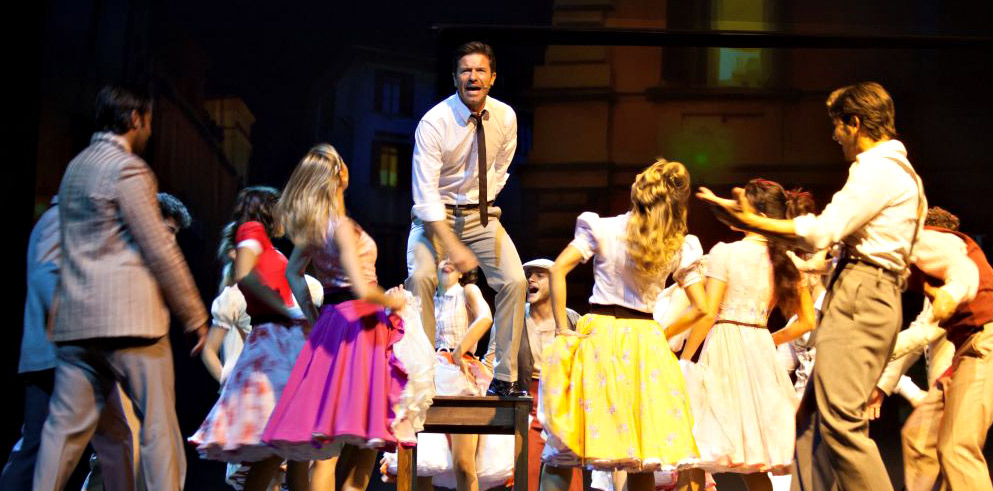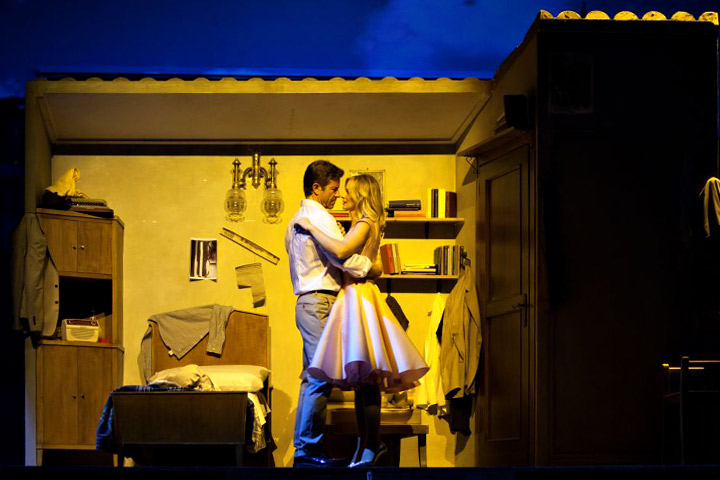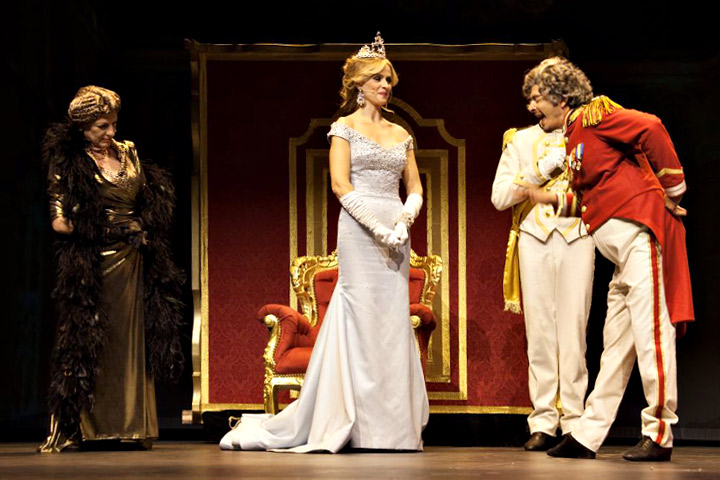Italy – Vacanze Romane (Roman Holiday) is back, twelve years after its debut at the Teatro Sistina in Rome. The opening of the 2015-2016 theatre season was entrusted to the notes of this musical, lit by Clay Paky. It was written by Armando Trovajoli and Pietro Garinei, and again starred Serena Autieri and Paolo Conticini. The play is a musical depiction of a generous, dreamy, post-WWII Rome, inspired by the film of the same name by William Wyler, with Gregory Peck and Audrey Hepburn.
Lighting designer Francesco Adinolfi has already taken part in a theatrical project starring Serena Autieri: he was involved in La sciantosa, directed by Gino Landi, last year. It was a modern, contemporary reinterpretation of the provocative, sensuous atmospheres of the early twentieth century café-chantants. Elvira Donnarumma was the top star of these musical establishments, able to tug at your heartstrings with her voice. She is still today considered one of the most famous singers of Neapolitan songs ever.
After reading this year’s script, Francesco Adinolfi attended the rehearsals of the musical.
What inspired your lighting design and gave you your ideas?
“Together with Oscar winner Gianni Quaranta (Nastro d’Argento for Best Production Design in 1978 for Jesus of Nazareth and in 1983 for the film La Traviata; Oscar for Best Production Design in 1986 for Room with a View and César Award for Best Production Design in 1995 for Farinelli), I studied the works and lighting atmospheres of the American painter Edward Hopper, and began to pick out the Clay Paky lights I wanted to include in my lighting design.”
“The realism of Hopper’s settings and the contrast between the dazzling presence of light and the internal silent geometric compositions of his works were surprising.”
“The idea of reproducing a deep cutting light, intense sunlight, and the pictorial compositions of cast shadows in a theatre suggested the use of modern Clay Paky Profile-series moving-head beam shapers, which are ideal for the most demanding set lighting needs.”
Adinolfi chose a total of eighteen Alpha Profile 800 STs, designed and built with sophisticated micromechanics. They are capable of creating any geometric shape with their miniaturized beam shaper systems consisting of four fully independent blades.
The lights are compact, lightweight and quiet, with exceptional brightness, and a zoom capable of producing a razor sharp uniform beam of light.
He also selected ten Alpha Profile 1500 STs, capable of creating countless shapes in multiple dimensions. They are bright, quiet and have a 1:9 zoom, which makes them suitable both for short and long distance uses. These lights come with a wide range of visual effects, an innovative autofocus system, and a frost filter which is synchronized with the zoom for an extremely gradual wash effect.
The rehearsals the lighting designer attended and his subsequent meeting with the set designer were essential – together with the work on the sketches and AutoCAD layout drawings – in order to put the ideas together and clarify the set lighting needs.
In addition to the lights, there were also several Clay Paky Glow-up Strip 100 LED bars. Thanks to their batteries and controllability, they are particularly suitable for use during temporary events or tours. They were easily integrated into the set architecture, installed in a row inside a house (one of the set structures), and controlled with a motorized electronic zoom (14° and 70°) to create Serena Autieri’s silhouette.
They have a ten-hour battery life in optimal consumption conditions and may be recharged by placing them inside their flight cases (rapid recharge) or by connecting them directly to the mains supply.
No further changes were necessary once the positions were defined. The Profiles allowed Adinolfi to program all the scenes needed for the show lighting environments and create them thanks to conversion filters.
The producer Enrico Griselli, from Engage, dealt with the musical/tour production.
Luigi Russo directed the new staging. He gave the show a new look with an eye to “giving a three-dimensionality to the characters” as they moved among Oscar winner Gianni Quaranta’s 1950s sets, Bill Goodson’s choreographies, and the hypertechnological projections. When it was first staged twelve years ago, it was a classic style show. There was a scene with a reconstructed Trevi Fountain, which was inconvenient to move around. Today, however, that all seemed a bit old-fashioned. This new version is updated, more lively and full of energy.










